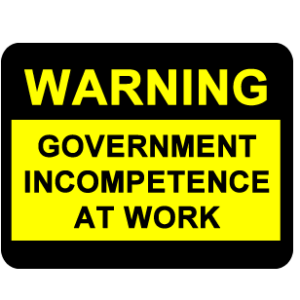Editor’s Note: For another view, please see Point: Look to Cities for Government That Works
When it comes to solving social and economic problems, the private sector invariably outperforms the public sector. In other words, private individuals, not government bureaucrats, are better at properly defining and fixing societal issues.
A great example of this phenomenon is the age-old “problem” of educating children. For decades, there has been a clear delineation between private sector education (home schooling, charter schools, parochial schools, etc.) and public sector education (government schools).
Without a doubt, private sector education is superior to public education. Private school students consistently outpace their public-school peers. According to the Council for American Private Education, “Average ACT scores for 2015 graduates of private schools well exceeded the national average. The ACT mean composite score for 2015 private school graduates was 23.8, compared to 20.7 for public school graduates.”
Moreover, according to the National Center for Education Statistics (a government organization), “In grades 4 and 8 for both reading and mathematics, students in private schools achieved at higher levels than students in public schools. The average difference in school means ranged from almost 8 points for grade 4 mathematics, to about 18 points for grade 8 reading. The average differences were all statistically significant.”
Boatloads of studies show private school students routinely outclass public school students. This is especially remarkable because private schools do so with far fewer resources than public schools.
In 1979, the Department of Education was established “to promote student achievement and preparation for global competitiveness by fostering educational excellence and ensuring equal access.” Unfortunately, the department has failed miserably in this mission.
Despite a budget of more than $68 billion and 4,000 employees, the Education Department has done little, if anything, to improve student achievement. According to the most recent results from the Nation’s Report Card, only 12 percent of 12th-grade students scored at or above proficient in U.S. history. The results were not much better for science (22 percent), math (25 percent), and reading (37 percent).
On a comparative basis, students in the private sector are thriving. For instance, 55 percent and 44 percent of 8th-grade students in Catholic schools scored at or above proficient in math and reading, respectively.
No doubt, there are many reasons for this gap. First, private schools do not possess huge centralized bureaucracies. These institutions largely operate independently, which allows them to be more responsive to individual needs and unique circumstances. Second, the private sector incorporates competition, which drives innovation. On the contrary, public schools are giant monopolies immune from competition, which stifles innovation and limits freedom.
The situation is made worse by the public school “one-size-fits-all” approach to education. Unfortunately, this repressive method is a staple of government programs. It fails to address the distinctive needs and circumstances of individuals. The “one-size-fits-all” strategy is draconian and inevitably leads to unintended consequences.
But that’s not the only reason the private sector is more capable to address social issues.
Private citizens, unlike public servants, are generally more attuned to the intricacies of problems. Therefore, members of the local community are better prepared to address problems in schools (or any institution, for that matter).
The truth is that private citizens, not bureaucrats, have a better grasp of problems.
Additionally, they have more skin in the game. Obviously, parents are inherently more concerned about their children’s educational attainment than bureaucrats. The incentive for private individuals to solve societal problems is much greater than distant (geographically and emotionally) bureaucrats.
Ronald Reagan once said, “The most terrifying words in the English language are: I’m from the government and I’m here to help.” I could not agree more. Despite their best intentions, government bureaucrats are simply too far removed from classrooms (and all other institutions) to adequately understand, let alone properly address, most problems.
This is true not just for education. It holds true for nearly every “problem” the government has tried to “solve.” Since the government declared the “war on poverty” in 1965, the poverty rate has remained stagnant. Since the “war on drugs” was launched in the 1970s, drug use has continued to increase. Even worse, the government’s health care “solutions” have been atrocious. Generally speaking, Medicaid, Medicare, Obamacare and Veterans Affairs are ineffective, rife with corruption and headed toward insolvency.
Clearly, education isn’t the only issue that has been worsened by government intervention.
By definition, the private sector is more flexible, responsive and agile than the public sector. On the other hand, the public sector is a bureaucratic leviathan unable to address the sophisticated nature of complex problems. Adversely, government exacerbates problems while creating new ones. We are all better off when the private sector, not government, addresses problems.

